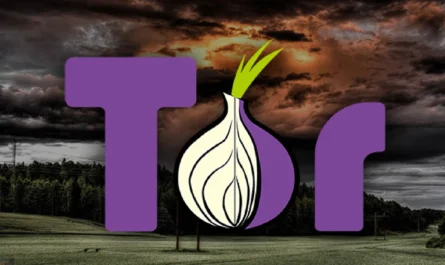A severe vulnerability in Microsoft’s Windows Server Update Service (WSUS) has triggered a wave of cyberattacks targeting organizations across the United States. Security researchers from Sophos revealed that more than 50 organizations have been affected so far, spanning sectors such as technology, education, healthcare, and manufacturing.
The flaw, tracked as CVE-2025-59287, involves the deserialization of untrusted data, allowing attackers to inject malicious code into vulnerable systems. Despite a regular update issued by Microsoft in mid-October, the patch failed to fully secure affected servers, prompting Microsoft to release an emergency out-of-band fix days later.
What Makes CVE-2025-59287 So Dangerous
WSUS is a widely used tool for IT administrators to manage software updates across large networks. Because it operates with elevated system privileges, any exploit can quickly spread malware to multiple devices.
In this case, attackers exploit the vulnerability by sending manipulated data that the server mistakenly executes as trusted code. This enables remote code execution, potentially leading to:
-
Unauthorized access to sensitive systems
-
Deployment of ransomware or data-stealing malware
-
Manipulation of system updates to distribute malicious payloads
This type of vulnerability is especially concerning because it targets infrastructure at the root of system maintenance, not just user endpoints.
Scope of the Attacks
According to Sophos’ telemetry, the firm detected six confirmed incidents of exploitation directly within its own customer network. However, additional intelligence showed at least 50 verified victims worldwide, with the majority based in the United States.
“This may be an initial reconnaissance phase where attackers are collecting data before launching larger-scale intrusions,” explained Rafe Pilling, Sophos’ Director of Threat Intelligence.
Pilling noted in a LinkedIn post that the compromised organizations include universities, technology firms, healthcare institutions, and manufacturers, demonstrating the wide reach of this attack campaign.
Microsoft’s Emergency Patch and CISA’s Response
After the first patch failed to fully resolve the issue, Microsoft released an out-of-band update on October 25, 2025, urging users to install it immediately.
The Cybersecurity and Infrastructure Security Agency (CISA) added CVE-2025-59287 to its Known Exploited Vulnerabilities (KEV) catalog. This list highlights security flaws that have already been exploited in active attacks.
CISA issued an advisory urging both public and private sector organizations to:
-
Apply the latest Microsoft patch immediately
-
Inspect WSUS systems for unauthorized activity
-
Review system logs for signs of compromise
CISA also warned that delayed patching could expose organizations to continued exploitation, especially since proof-of-concept code and attack details are already circulating online.
Who’s Behind the Attacks? UNC6512 and Others
Researchers from Google’s Threat Intelligence Group (TAG) have linked the exploitation to a threat actor tracked as UNC6512. After gaining access, the group conducted reconnaissance within affected environments and exfiltrated data from compromised servers.
Meanwhile, Eye Security reported observing two different threat groups exploiting the same flaw, suggesting that multiple actors are now targeting WSUS. Their findings expand on earlier work by Huntress Labs, which was among the first to publish threat data related to this campaign.
While UNC6512’s origins remain unclear, analysts believe the group may be state-sponsored or financially motivated, given its sophistication and global targeting pattern.
Timeline of the Attack Campaign
| Date | Event |
|---|---|
| Mid-October 2025 | Microsoft issues the first patch, which proves insufficient. |
| October 24, 2025 | Sophos detects initial signs of exploitation. |
| October 25, 2025 | Microsoft releases an emergency out-of-band fix. |
| Late October 2025 | At least 50 victims identified globally. |
| October 30, 2025 | CISA adds the flaw to the KEV catalog and issues a public advisory. |
This rapid sequence of exploitation highlights how cybercriminals act within days of a vulnerability being disclosed.
Immediate Actions for Security Teams
Experts are urging organizations to take swift measures to protect their networks.
Step 1: Apply Microsoft’s Emergency Patch
Ensure all WSUS servers have been updated with the October 25 out-of-band fix.
Step 2: Review Access Logs and Audit Trails
Look for unexpected connections, configuration changes, or administrative logins.
Step 3: Implement Network Monitoring
Deploy intrusion detection systems (IDS) and endpoint monitoring to flag unusual data exfiltration.
Step 4: Isolate and Investigate Compromised Hosts
If you detect compromise indicators, isolate affected servers immediately to prevent lateral movement.
Step 5: Strengthen Privilege Management
Review administrative privileges for WSUS and ensure strong segmentation between internal systems and the update server.
Why WSUS Is a High-Value Target
The WSUS platform is central to Windows-based enterprise infrastructure, controlling how updates are distributed across devices. Because it runs with trusted credentials, a single breach can potentially infect hundreds or even thousands of endpoints.
This makes WSUS a high-priority target for both cybercriminals and nation-state hackers seeking broad network access with minimal effort. Similar tactics were seen in the SolarWinds supply chain attack, where trusted software was weaponized to deliver malicious code.
Industry-Wide Implications
This incident reinforces a growing reality: patching alone isn’t enough. Modern attackers exploit even small timing gaps between disclosure and patch deployment.
Organizations must adopt continuous monitoring, threat intelligence integration, and multi-layered defense strategies to minimize the risk from infrastructure-level vulnerabilities.
Security vendors like Sophos, Huntress Labs, and Eye Security continue to share real-time intelligence to help organizations stay ahead of emerging threats.
As Rafe Pilling of Sophos warned,
“This event is a wake-up call. The ability to patch quickly must be paired with constant vigilance and proactive defense.”
Conclusion: A Critical Moment for Cyber Defense
The exploitation of CVE-2025-59287 shows how rapidly the cybersecurity landscape can change — from vulnerability discovery to widespread exploitation in a matter of days.
While Microsoft’s emergency patch addresses the immediate issue, long-term resilience requires visibility, rapid response, and layered defense. For now, organizations must focus on patching, auditing, and staying informed as new threat intelligence continues to emerge.
This event stands as a stark reminder that even trusted systems like WSUS can become attack vectors if left unprotected.




